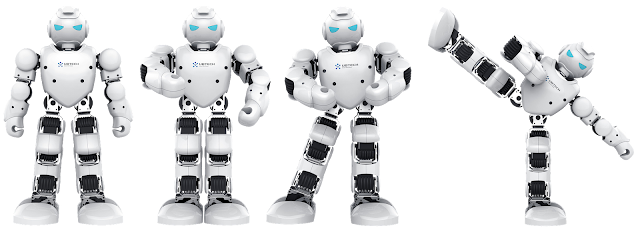Typically, industrial robots come programmed with limited or unlimited sequence control. These sequences determine the motion paths of the robotic mechanism, such as a gripper or tool. Robotic controls can be servo-based, which means they rely on a closed-loop for feedback and enable unlimited sequence control. They can also be non-servo and have an open-loop control that does not provide feedback, and depends on limited sequence control.
An industrial robotic system can handle more tasks than the standard automatic machinery, which can also be equipped with tooling configurations. Most industrial robots can suffice as multifunctional robots, but most industrial robot manufacturers choose to design robots for specific tasks such as loading, assembly, welding, or painting.
Most robots can perform tasks similar to their specialization field. The effectiveness of the operation depends on such factors as speed, range, weight, unit size, load capacity, operating costs, and motion repeatability.
Powering off a Robotic system
The most common robotic mechanisms include hydraulic drives, pneumatic actuators, and electric motors. Hydraulic drives are the most powerful and enable robots to have a load capacity of more than 500lbs and work well with dangerous substances. Hydraulic drives are prone to oil leaks, which can cause explosions.
Electric motors are simple in design and source power efficiently, making them the most popular in cost to performance ratings. Pneumatic actuators are used for powering up mechanisms that deal with external objects such as a gripper on an EOAT(end of arm tools) a pair of actuators working together to power one gripper can enable the gripper to move on multiple axes.
Axes of Motion
The motion range is a significant determinant of the capability of the robotic arm and is measured in DOF (Degrees of Freedom). DOF refers to how many axes the robot arm can travel. A typically limited sequence robot moves along two or three axes, while its arm can perform an arm sweep, elbow extension, or shoulder swivel. An unlimited sequence robot can execute more motions along more axes such as roll, yaw, and pitch.
Control Consoles
A system control console usually integrates a digital computer with an operating system as well as application software required to run automated tasks. A system operator programs or controls the robot’s movement via an array of push buttons on the console, which allows for some manual control over the pre-programmed sequences.
While setting up, strict adjustments to the programming ensures the robot avoids collision with surrounding objects while in motion. Industrial robots can also be fitted with handheld control boxes that connect to the control console via cables. These control boxes have arrays of pushbuttons and graphical display interfaces that enhance their ease of use.
Mounting Options
Large robotic systems are typically floor standing, but some varieties are vertical, upside-down mounted, or at an angle, that improves accessibility in a workspace. The mounting methods are advantageous for specific applications.
For instance, a vertically mounted system is attachable to structural frames with rails, which allow the unit to move a specific distance when painting a large object or welding for a long time. You can mount some robots in a fixed position on walls or mounted to allow for angular movement.
Conclusion
Hundreds of software exist that can create a robotic system. The software choices depend on the hardware components. Careful planning and examination of the system and components will help you in the decision.
Using robots in the industrial setting improves productivity and enhances the workers’ safety while they work. In the future, robots will not be an option, rather a necessity in industries. Human workers will complement the robot’s efforts and will be useful in programming the machines.

